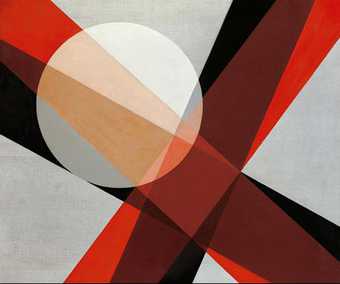I grew up in a household shaped by the Bauhaus and the thinking behind it, because my father Hans Fischli (1909–1989), architect and artist, had studied there in 1929–30. On his return from Dessau he immediately built the house near Zurich where I was brought up (I was born in 1952). That house bore the stamp of his Bauhaus days, and in the 1950s it stood out as rather unusual - at the time the village of Meilen was still a farming community, firmly rooted in the normality of Swiss life.
As a child you want to be as much like everyone else as possible, and it only slowly dawns on you that you’re living in a different kind of house from the other children. But even if some of them mocked our “shoe box”, we soon began to realise it was something quite special, because people used to come from all over to see it. So we began to feel a sort of pride. Which no doubt helped us to deal with the fact that we had no furniture as others saw it. We had no sofa. What we did have were chairs by Bertoia and Breuer, although not upholstered of course, which my father would have thought bourgeois. The outside world always viewed us with a mixture of admiration and mild scorn.
My father had a special relationship to things – to architecture, to furniture, to the pictures in our house. In the living room there was a painting by Josef Albers and a Paul Klee drawing. Everything was charged with that singular enthusiasm my father exuded. He was so convinced and inspired by the rightness of the Bauhaus that it rubbed off on us too.
I also became aware of the way he used to harangue his architectural clients on the matter of right and wrong, browbeating them, just about hypnotising them. He lectured them on the fact that the Bauhaus is not a style, but a state of mind, a thought; that style is the first step towards kitsch, because it is about only surfaces and forms and has nothing to do with spiritual and intellectual content. He didn’t judge taste according to form, but on a preceding level, using the same criteria by which we judge life and society.
We absorbed these teachings as children. But it wasn’t a case of deriding the “wrong”; it was always about a passion for the “right”. Although this did lead to certain “moments” at home – he didn’t want any knick-knacks in the house, and I remember arguments because he didn’t like flowers or pot plants as nature happened outside. When we were given souvenirs from distant lands he would see that they discreetly disappeared. It was a bit like living with the taste police. But it wasn’t aggressive, because all his actions were based on his love and enthusiasm for the “right”. It was only later that I consciously pieced together and questioned the background to all of this.
Whenever he had finished a painting or a sculpture, he would show it to the family.We had to sit ourselves down and be sure not to speak too hastily, which was hard for me when I was a child. While my brother and sister seemed to me to be more interested in his art, I was fascinated by the way he led his life and the feeling that life gave you. He often painted at night, listening to jazz records; that was what interested me, a father who paints at night up in his studio with music playing, a father who travels and has unusual friends – sculptors, photographers, product designers (he was the principal of the School of Applied Arts in Zurich from 1954 to 1961). At the weekend, students, fellow artists and teachers would come and have parties with the clients, who had great cars. I was spellbound.
When I was fifteen I discovered Pop Art – an art with a fondness for everyday things, the banal and the trivial. That was new to me. Then we started to learn from Las Vegas. The beat of the 1960s also influenced my new attitude to life; and then there was concept art, Arte povera. I went to the When Attitude Becomes Form: Live in Your Head exhibition at the Kunsthalle, Bern, in 1969, organised by Harald Szeemann, and a whole new world opened up. What I saw before me was a space with a lot of things that previously seemed to have been ignored.
My father walked a tightrope between his early teachers Albers and Klee. Albers was very important to him on a professional basis at the School of Applied Arts. But, by his nature, he didn’t connect so much with Albers’s rigour. He was open to many things that developed after Bauhaus, or concurrently with it. He admired Duchamp and Picabia. Schwitters was important to him too. He never cultivated an ideology, he just took an interest in a great many things. So my picture of the Bauhaus, which has lodged in my mind since childhood, is not only rigorous, it has also always had a playful, poetic side.


